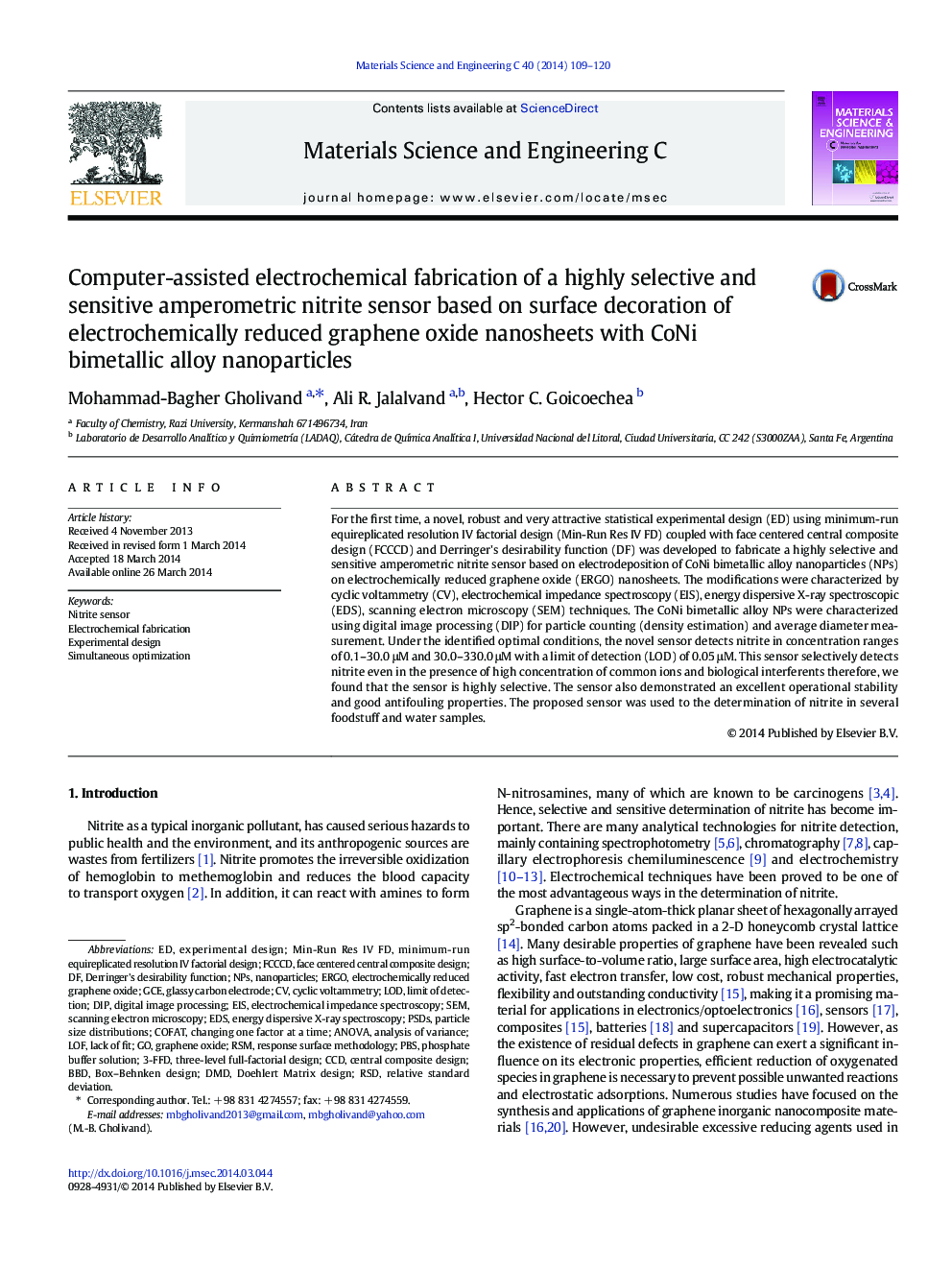| کد مقاله | کد نشریه | سال انتشار | مقاله انگلیسی | نسخه تمام متن |
|---|---|---|---|---|
| 1428322 | 1509181 | 2014 | 12 صفحه PDF | دانلود رایگان |

• Eight variables were screened by Min Run Res IV FD to identify the key variables.
• Mathematical models for the two studied responses were developed by FCCCD.
• By using DF the responses were optimized simultaneously.
• The SEM image of the modified electrode was processed by digital image processing.
• The sensor was successfully applied to determination of nitrite in real samples.
For the first time, a novel, robust and very attractive statistical experimental design (ED) using minimum-run equireplicated resolution IV factorial design (Min-Run Res IV FD) coupled with face centered central composite design (FCCCD) and Derringer's desirability function (DF) was developed to fabricate a highly selective and sensitive amperometric nitrite sensor based on electrodeposition of CoNi bimetallic alloy nanoparticles (NPs) on electrochemically reduced graphene oxide (ERGO) nanosheets. The modifications were characterized by cyclic voltammetry (CV), electrochemical impedance spectroscopy (EIS), energy dispersive X-ray spectroscopic (EDS), scanning electron microscopy (SEM) techniques. The CoNi bimetallic alloy NPs were characterized using digital image processing (DIP) for particle counting (density estimation) and average diameter measurement. Under the identified optimal conditions, the novel sensor detects nitrite in concentration ranges of 0.1–30.0 μM and 30.0–330.0 μM with a limit of detection (LOD) of 0.05 μM. This sensor selectively detects nitrite even in the presence of high concentration of common ions and biological interferents therefore, we found that the sensor is highly selective. The sensor also demonstrated an excellent operational stability and good antifouling properties. The proposed sensor was used to the determination of nitrite in several foodstuff and water samples.
Figure optionsDownload as PowerPoint slide
Journal: Materials Science and Engineering: C - Volume 40, 1 July 2014, Pages 109–120